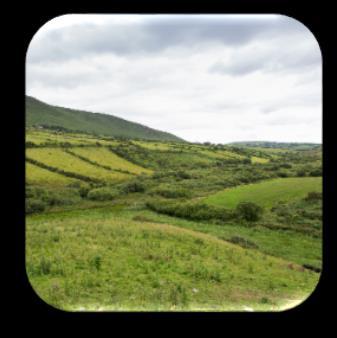
15 minute read
Life Sciences Category
30. Which Washing Powder?
Washing powders contain detergents, but biological washing powders also contain enzymes which break down larger molecules such as starch and protein into smaller molecules which can then be dissolved in water. The enzymes used are amylases used to break down starch, proteases used to break down protein and lipase used to break down grease and fats. The presence of these enzymes can be demonstrated by their action on starch, milk protein (casein) and fat.
Have you ever wondered how biological detergents work and if there is any difference between the different brands available in the supermarket?
You might like to:
Design an experiment to investigate the effectiveness of a number of biological detergents and their ability to break down: • Starch • Protein • Fat
Investigate if their effectiveness decreases: • Over time • With the temperature of the water
Possible Technique:
Use a no. 6 cork borer to cut wells in starch/iodine agar, milk agar and mayonnaise agar in agar plates. Add 1% w/v of detergent and measure areas of clear zones.
Starch agar: Mix 2 g soluble starch with cold water. Add to 100 cm3 boiling water. Mix 2 g agar powder with cold water. Add to boiling starch solution stirring continuously.
Milk agar: Mix 2 g milk powder with 100 cm3 cold water. Heat until boiling. Mix 2 g agar powder with cold water. Add to boiling milk powder stirring continuously until dissolved.
Mayonnaise agar: Mix heaped spoonful of mayonnaise with 100 cm3 cold water. Heat until boiling. Mix 2 g agar powder with cold water. Add to boiling mayonnaise stirring continuously until dissolved.
Research Links: https://cd1.edb.hkedcity.net/cd/science/biology/resources/l&t2/practical/Practical-16.pdf https://www.thoughtco.com/how-do-detergents-clean-607866 https://www.persil.com/uk/laundry/laundry-tips/washing-tips/difference-bio-non-bio-detergent.html
For many teenage girls fashion is an important part of their lives. Fashion trends tend to come and go but high heels remain popular for women of all ages. Numerous studies have shown that wearing high heels can be costly in more ways than one, taking their toll on the wearer’s spine, hips, knees, ankles and feet, while altering their posture and gait. "If you keep your core tight, and exercise your core, that will help stabilise your pelvis and spine. Wearing high heels tilts the pelvis forward; if the core is weak then it's going to tilt even further." Dr Tony Accardi, President of Chiropractic Association of Ireland
Have you ever wondered that as a result of wearing high heels you might actually be causing back problems in later life?

You might like to:
• calculate the percentage of girls in your school who wear shoes with a heel height of above 5 cm • study the effects of heel height in shoes on posture of girls while walking at a steady pace in high heels and in heels of less than 5 cm (Hint: Use a treadmill, reflective markers on shoulder, hip, knee, ankle and forefoot. Record video.) • find the pressure under the heels of a range of high heeled shoes compared to the pressure under the heels of a range of flat heeled shoes
Further links: http://www.thespinehealthinstitute.com/news-room/health-blog/how-high-heels-affect-your-body https://www.rte.ie/lifestyle/living/2017/0320/861166-the-health-risks-of-your-killer-high-heels/
32. All about Sand Dunes
Did you know that the sand dunes in Ireland have developed over the last 5,000 years? They are formed when sand deposited on the beaches by the sea is blown by the wind beyond the high-water mark. The sand builds up into dunes sometimes many metres high held together and stabilised by vegetation such as marram grass and sand sedge. Sand dunes form a natural barrier to the destructive forces of wind and waves and are important in helping prevent beach erosion. In recent times some of these important dune systems have come under threat not only from natural causes such as shoreline erosion due to storms and high tides but also from humans. With the growth in tourism, family days out to the seaside, beach parking and the increase in leisure activities such as, windsurfing, the protective vegetation which covers the dunes and binds the sandy soil is in danger of being worn away leading to erosion.
Do you live near a beach with sand dunes?
Have you ever wondered how a sand dune ecosystem develops and why both the percentage cover and the variety of plants increase the further you move away from the sea?
You might like to:
• investigate the changes in colour, acidity and infiltration rate of the sand to soil on a line transect • identify the vegetation and how the vegetation varies as you move inland • identify the adaptations of the plants you find which enable them to survive in this environment • evaluate the positive and negative aspects of human activities on sand dunes • draw up a list of actions which might help to protect and preserve beaches and sand dunes
Further links: http://www.coastalwiki.org/wiki/Sand_dune_-_Country_Report,_Ireland http://www.fingalbiodiversity.ie/resources/fingal_coast/2007%20Dune%20Protection.pdf http://www.dnrec.delaware.gov/swc/shoreline/pages/duneprotection.aspx http://www.countrysideinfo.co.uk/successn/primary2.htm https://www.biology-fieldwork.org/a-level/succession/sand-dunes/
33. Antidandruff Shampoos and Asthma
‘Parents of asthma sufferers should try washing their children's hair with an anti-dandruff shampoo. Researchers in Brazil have found that the skin flakes on children's scalps provide a comfortable and overlooked refuge for housedust mites, which trigger allergic responses that can cause asthma attacks.
Charles Naspitz and his colleagues in the paediatrics department of the Federal University of São Paulo studied children from middle-class households whose general standards of hygiene were "satisfactory". Using a hand-held vacuum cleaner with a fine nozzle they collected fine dust from the children's scalps, just hours after they washed their hair with an ordinary shampoo.
The researchers found two common species of mite, Dermatophagoides pteronyssinus and Blomia tropicalis, in the scalp dust. The children had similar numbers of mites on their scalps whether or not they had asthma. But blood tests showed that while the asthmatic children made antibodies to them, the non-asthmatic children did ...’

Ref: New Scientist, Magazine issue 2069, 15 February 1997 by Phyllida Brown
Have you ever wondered if there is a link between asthma and dandruff?
You might like to:
• find out all you can about asthma and dandruff • investigate the possibility of a relationship between asthma and dandruff • investigate if the use of an antidandruff shampoo for a controlled period of time reduces the common symptoms in asthma sufferers
The management of asthma relies on a patient's ability to monitor their asthma regularly. Self-monitoring includes assessing the frequency and severity of symptoms (such as wheezing and shortness of breath) and measurement of lung function with a peak flow meter. A control group of volunteers could keep an asthma diary and record daily peak flow meter readings. Peak flow meters are used to measure peak expiratory flow rate (PEFR) to monitor lung function. They are small, inexpensive and easy to use. You could contact a manufacturer for free samples.
Further links: http://www.asthma.ie/ http://www.irishhealth.com/article.html?id=560 http://www.newscientist.com/article/mg15320690.600-vacuum-cleaner-gets-to-the-roots-of-asthma.html https://www.oxhp.com/secure/materials/member/asthma.pdf
Enzymes are protein in nature and their function is to speed up the rate at which metabolic processes and reactions occur in living organisms without being destroyed or altered during the process. Without enzymes, these reactions would take place too slowly to keep you alive. Some substances such as alcohol (ethanol) and aspirin (salicylic acid) can reduce the activity of enzymes or prevent them from working. Such substances are referred to as enzyme inhibitors. Therefore, if we take these drugs (and others such as tobacco) over a period of time our health may be damaged. Note that some drugs such as alcohol can cause excessive production of some enzymes.
Have you ever wondered if your body’s enzymes are affected by drugs such as alcohol, caffeine, aspirin, etc.?
You might like to:
• investigate if common drugs such as alcohol and aspirin can affect the rate of enzyme reaction • determine the presence of starch quantitatively using the iodine test with a colorimeter fitted with a red filter • investigate if the presence of metal ions in solution inhibits the activity of enzymes (use a solution of copper(II) sulfate) for Cu2+ ions}
Further links: http://books.google.ie/books?id=oAFiCHdrEAYC&pg=PA23&lpg=PA23&dq=use+a+colorimeter+to+measure+starc h+breakdown&source=bl&ots=mL9ApnJ60h&sig=zPTNyU46xjRDtYNiHuhEL2i45rg&hl=en&sa=X&ei=jZXvUfeHPOe w7AbPmIGoAg&ved=0CC0Q6AEwAA#v=onepage&q=use%20a%20colorimeter%20to%20measure%20starch%20b reakdown&f=false
35. Low-fat Crisps
There’s a woman in Chicago who has a collection of more than 4,000 crisps – each one resembling a celebrity. Crisp-a-like lover Nadine Lumford says her most prized possession is her “Jesus crisp”. She also has the inevitable Elvis crisp, as well as Princess Diana and Communist Karl Marx. According to Nadine, there’s a celebrity crisp in every packet; you just have to look hard. I assume she didn’t find her Elvis crisp in a low-fat packet. I also assume she has a vivid imagination.
BBC News - Amazing tales from Planet Tabloid Friday, 12 January, 2001, 16:43 GMT
Have you ever wondered just how much fat there is in a low-fat crisp?
You might like to:
• look at the labels of different brands of crisps; rank them in order of high to low fat • decide which brand of crisp you would recommend to someone wanting to follow a low-fat diet (remember: crisps contain other types of food as well) • calculate your body mass index (BMI), a measure of body fat worked out from your height and weight. Go to this website to find out how
(British Association for the Advancement of Science)
There are lots of crisp flavours on the market, from pickled onion to crispy bacon. There was even a time back in the 1980s when you could get your hands-on hedgehog flavour crisps. Having never eaten a hedgehog I can’t vouch for their authenticity, but there they were, lining the corner-shop shelves. Yet despite this myriad of flavours, crisp manufacturers Walkers say their top three most popular snacks are the good-old-fashioned cheese and onion, salt and vinegar, and ready salted.
Have you ever wondered why some crisps taste saltier than others?
You might like to:
• compare the salt content of different types of crisp or different flavours of the same brand of crisp • find out how to carry out a chloride titration or use flame photometry to determine the sodium content of your crisp samples • devise a simple experiment to find out if the crisps with higher salt content stay fresh for longer (salt can be used as a preservative)
(British Association for the Advancement of Science)
Research has shown that reducing average salt intake to 6 grammes a day would prevent 70,000 strokes and heart attacks a year. Some labels do give you the salt content of food per serving, but this currently only applies to a small number of foods; other labels on foods give the amount of sodium in grams per 100 g of food. To convert sodium to salt, you need to multiply the amount of sodium by 2.5: 1 g of sodium per 100 g = 2.5 g salt –http://news.bbc.co.uk/2/low/programmes/newsnight/3816735.stm.
37. Crisp Packets
All types of packaged food have labels which give us essential information. Some of the information given is strictly regulated by the law. For example, anything that claims to be ‘alcohol-free’ must have less than 0.05% alcohol in it. Another important piece of information is the ‘use-by’ or ‘sell-by’ date. These are there to make sure we eat the food before it goes off.
Have you ever wondered how to keep your snacks fresh at the end of the party?
You might like to:
• investigate the range of materials used to make crisp packets; find out why manufacturers have chosen them; find out what their key properties are • design an experiment to find out which material keeps your crisps fresh for the longest period of time • investigate the effect of temperature on the shelf-life of your crisps; see if some packaging responds differently to changes in temperature compared to others
(British Association for the Advancement of Science)

Soil is made up of mineral particles, organic matter, water, air and living organisms and forms the top layer of the earth’s crust. Together with air and water soil makes up the three natural resources on which all animal and plant life depends.
Have you ever wondered what’s in soil?
You might like to:
• compare different soils and investigate the types of plant that grow in them • investigate the humus content, texture, pH • use a soil test kit to estimate the nitrate, phosphate and potassium content • look at the number of organisms, for example earthworms, living in different types of soil • see how the moisture content of a soil affects how well a plant will grow in it • make your own soil, designed for growing a particular plant, and see how well the plant grows (British Association for the Advancement of Science)
Further links: http://ec.europa.eu/environment/soil/index_en.htm http://home.howstuffworks.com/composting.htm http://www.ucd.ie/sssi
39. Computers and Dry Eye Syndrome
It is a proven fact that working at a computer for long periods of time is one of the main causes of Dry Eye Syndrome.
What is dry eye syndrome? ‘The eye depends on the flow of tears to provide constant moisture and lubrication to maintain vision and comfort. Tears are a combination of water, for moisture; oils, for lubrication; mucus, for even spreading; and antibodies and special proteins, for resistance to infection. These components are secreted by special glands located around the eye. When there is an imbalance in this tear system, a person may experience dry eyes.’
When tears do not adequately lubricate the eye, a person may experience:
• pain • light sensitivity • a gritty sensation • a feeling of a foreign body or sand in the eye • itching • redness • blurring of vision

Sometimes, a person with a dry eye will have excess tears running down the cheeks, which may seem confusing. This happens when the eye isn't getting enough lubrication. The eye sends a distress signal through the nervous system for more lubrication. In response, the eye is flooded with tears to try to compensate for the underlying dryness. However, these tears are mostly water and do not have the lubricating qualities or the rich composition of normal tears. They will wash debris away, but they will not coat the eye surface properly. In addition, because these emergency tears tend to arrive too late, the eye needs to regenerate and treatment is necessary.’ (Ref: http://www.medicinenet.com/dry_eyes/article.htm)
Why does working on a computer cause dry eye syndrome? For some people, working on a computer can lead to dry eyes. This could be because people blink less while using a computer. If computer users don’t blink they don’t moisten the eyeball surface and this causes the eye surface to dry out. Stopping to blink or rest the eyes can reduce this effect.
You might like to:
• Set up a control group of students • Monitor the amount of times each subject blinks per minute while using the computer • Estimate the gaze angle and roughly estimate the eye opening while using a computer • Repeat the experiment with the test subjects, first while reading and then while relaxing
40. A Local Ecosystem
Undertake a field study of a local terrestrial or aquatic ecosystem to measure abiotic variables using appropriate sensors. Many environmental factors affect living organisms. One such factor is climate. Measurements could be taken of such quantities as humidity, temperature (air and ground or aquatic), oxygen content, incident light, etc. These could be measured using sensors and datalogging equipment which offers the opportunity for measurement over relatively long periods of time in the open field. The results could then be brought back to the laboratory for analysis. This data might then be related to the distribution of organisms or an investigation could be undertaken to assess the extent to which one factor (e.g. light) might affect another (e.g. oxygen levels). Soil type or water quality might also be investigated using a pH sensor.
Have you ever wondered why mist develops near ground level in the early morning?
You might like to:
• compare a seashore habitat to a grassland habitat • compare a hedgerow habitat to a woodland habitat • compare the same habitat in two different seasons of the year • investigate if the seasonal variation in temperature is linked to light intensity

Seashore Grassland Woodland Bog



Enzymes are proteins that play an important role in speeding up chemical reactions in living organisms. They are referred to as biological catalysts. They are used in research and industry to catalyse chemical reactions or to synthesize products, e.g. in the manufacture of medicines, vaccines, perfumes, etc. Nowadays many enzymes are immobilized or fixed. They become insoluble, attached to a bead or embedded in a gel and they can be used again and again. Also there are no traces of the enzymes in the product. This has many benefits, e.g. in the manufacture of drugs. There are fewer side effects as the product is more pure. The enzyme invertase which catalyses the production of glucose from fructose can be trapped in alginate beads using calcium chloride and sodium alginate.
Have you ever wondered if the rate of a reaction using an immobilised enzyme would depend on the size of the bead?
You might like to:
• immobilise the enzyme invertase using the procedure described in Prescribed Activity 10: ‘Prepare one enzyme immobilisation and examine its application’, Leaving Certificate Biology • use a selection of syringes to make beads of different sizes • use Clinistix strips to test for the presence of glucose
Further links: Laboratory Handbook for Teachers, SUPPORT MATERIALS, BIOLOGY, Leaving Certificate, Ordinary Level and Higher Level, NCCA, DES Prescribed Activities 10. Prepare one enzyme immobilisation and examine its application.
http://www.abpischools.org.uk/page/modules/enzymes/enzymes8.cfm?coSiteNavigation_allTopic=1 http://www.nuffieldfoundation.org/practical-biology/working-immobilised-enzymes-or-microscopic-organisms








